I have never understood why, of all the great cosmopolitan cities, Brussels is the one that most routinely gets described as ‘boring’. Its critics describe it as ‘anonymous’, and I suppose, to an extent, it is. There is no defining architectural style where, in the course of a single street, you can run the gamut from medieval ruin to Art Deco masterpiece to Brutalist anomaly – and probably pass several decent bars along the way. For my part, I’ve always been fascinated by this plurality, and if the city does have a character, it is one that doesn’t pretend to be anyone else’s idealised version of itself. Looking round this year’s edition of Art Brussels – the 35th – you could well say that its identity remains true to that of its host city. The distribution of fair livery is kept to a minimum, and, as on the streets of Molenbeek or Saint-Gilles, you will encounter a baffling juxtaposition every few metres.
*
This, for the most part, is for the good – and nowhere more so than at the stand of venerable Salisbury gallery the New Art Centre. Set up in 1958 and still going strong, the NAC’s stand brings together what should be a baffling range of exhibits by everyone from Anthony Caro and Barbara Hepworth to 2016 Turner Prize nominee Josephine Pryde. Pride of place goes to the late Angus Fairhurst’s The Birth of Consistency, a bronze sculpture of a quizzical gorilla staring into a mirror and playing the part of Narcissus. I’ve never been a great fan, but as an art fair set piece, it can’t help but draw you in.
*
A couple of stands down, I ran into another British dealer, Kim Savage of London’s FOLD gallery, and ask what the appeal of Art Brussels is for him. As a gallerist with a young roster, the draw is clear. Belgian collectors, he says, have an ‘adventurous’ reputation. ‘They don’t care so much about the secondary market – they tend to come in and, if they see something they like, they buy it.’ This is perhaps why the fair prides itself on showing younger and less internationally known artists than its competitors. Unfortunately, a fair amount of its ‘Discovery’ section – explicitly devoted to precisely this – strikes me as a bit gormless, with a lot of humourless and consciously political conceptualism exhibited side by side with work from the sillier end of the street art spectrum.
*
By no means does everything in this section deserve to remain undiscovered, however. A case in point is Thomas Baldischwyler’s admirably grotty solo presentation at the stand of Hamburg’s Galerie Conradi. The booth has been decorated so as to resemble one of those jaundice-hued little smoking rooms you find in railway stations and airports across Germany, complete with nicotine-stained carpet and a canary yellow receptacle for fag butts. Elsewhere, you can listen to a record of esoteric spoken word pieces and music he has compiled, while strange little paintings in various media line the walls. Smoking zones always have a secluded and seedy atmosphere, and bringing this subdued ambience into an otherwise buzzing art fair makes the stand feel something like a haven. Baldischwyler flits from painting to music to installation and product design with a bone dry sense of humour.
*
Back in the main section, the number of exhibiting artists has been whittled down from some 2,000 a few years ago to just 600. This is partly due to the fact that several galleries have been induced into showcasing the work of a single artist, and for the most part, these ‘SOLO’ displays are a qualified success. On the strength of her contribution to the Serpentine’s current show, I was immediately drawn to Laure Prouvost’s display with Galerie Nathalie Obadia, which brings together all manner of ephemera – LCD screens, text paintings crudely executed to resemble official signage, a ceramic octopus, a stale half loaf of bread perched on a plinth – but coheres into a fantastical, kitschy and just slightly disturbing whole. Prouvost’s work has a dauntingly intellectual framework, obsessed as she is with phenomenology and the very nature of displaying objects, but there’s a childlike wonder to it that somehow translates as charming.
*
If Art Brussels 2017 has any thematic undercurrent, it is – and I’m not quite sure how much this is by design – a meta commentary on collections and collecting. Scattered throughout are displays within displays that seek to simulate different approaches to exhibiting. Benoît Maire’s solo presentation at Meessen De Clercq is something of a wunderkammer-cum- historical exhibition, featuring all manner of objets trouvés together in vitrines without explanation. The front pages of a few wartime-era Belgian newspapers (including a Le Soir cover from the day after the German invasion of 1940) hang framed on the walls, projecting an uncomfortable significance onto his peculiar array of ephemera.
*
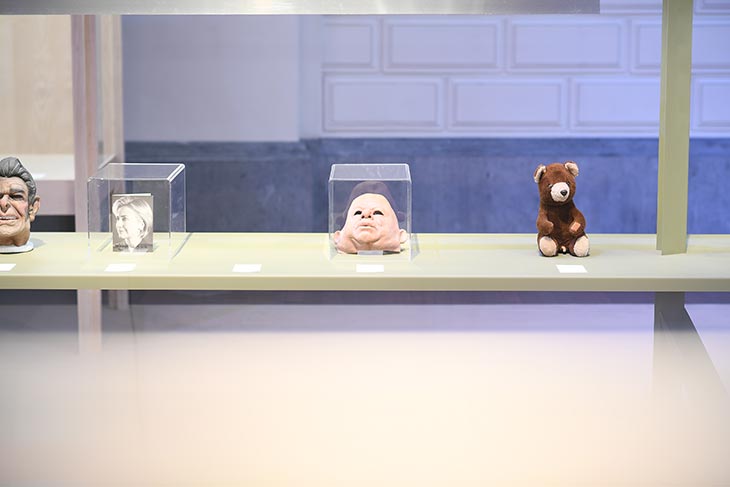
‘Mementos. Artists Souvenirs, Artefacts and other Curiosities’ (2017), Art Brussels. Photo: David Plas
Continuing this sub-theme, a special display put together by Jens Hoffmann and Piper Marshall brings together more than 70 objects submitted by artists and displays them in long, museum-style vitrines. The exhibits, we are told, are all items of great personal significance that should give us an insight into their respective owners’ practices. Sometimes, they do. Punk maven Linder submits a creepy little doll she owned as a child. Its bizarre proportions and scarily zealous eyes make it look for all the world like the nightmare pop art figures she constructs in her collages. Others could be red herrings, albeit rather nice ones. Joseph Kosuth submits a signed and dedicated photo of Hillary Clinton – a ‘reminder of all that we have lost’. Wim Delvoye gives us a beautiful little Duchamp lithograph that he says serves as a recurrent inspiration. It’s an intriguing show, but I couldn’t help but think back to the Barbican’s tremendous exhibition on artists’ personal collections a few years back. I left wanting to know and see more – which may in fact be the desired effect.
*
After my visit, I grabbed a few hours to have a walk around Brussels. My previously stated theory of its aesthetic diversity got the better of me, and I began to feel that the whole city was just an extension of its art fair. Its two most famous landmarks – the diminutive Manneken Pis and the gargantuan Palais de Justice – seemed almost in conversation, as if squaring off for a David and Goliath style combat, or perhaps a conspiratorial joke. Encountering some soldiers patrolling the streets brought me back to earth with a thud, but my sentiment remained unchanged. Vive la pluralité!
Art Brussels runs at Tour & Taxis, Brussels, until 23 April.
Unlimited access from just $16 every 3 months
Subscribe to get unlimited and exclusive access to the top art stories, interviews and exhibition reviews.

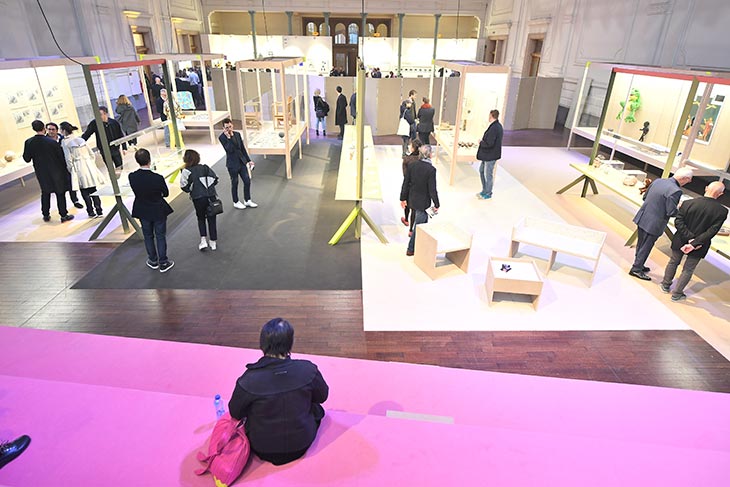
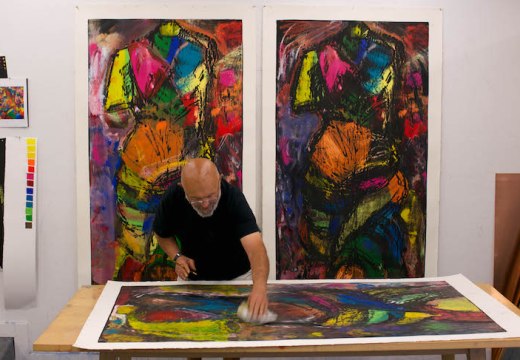
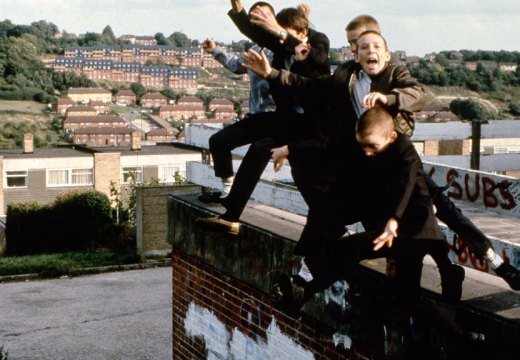
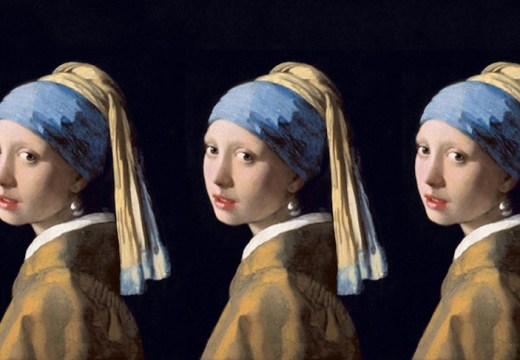









![Masterpiece [Re]discovery 2022. Photo: Ben Fisher Photography, courtesy of Masterpiece London](http://www.apollo-magazine.com/wp-content/uploads/2022/07/MPL2022_4263.jpg)
Has arts punditry become a perk for politicos?